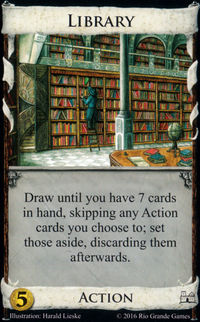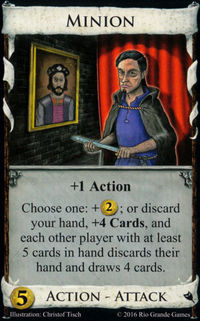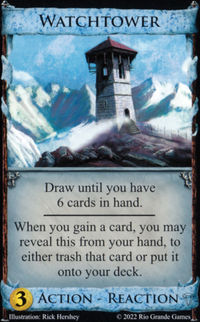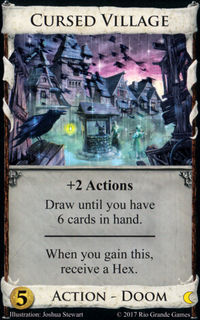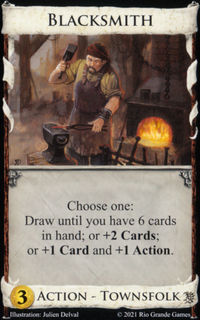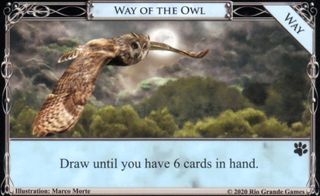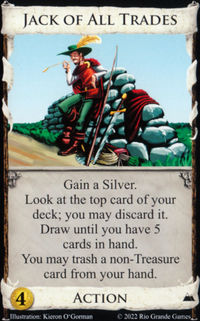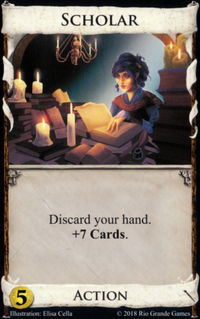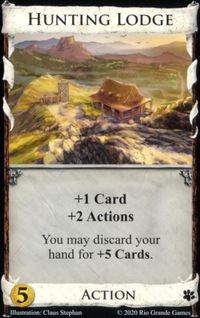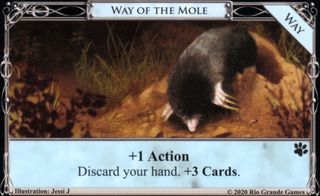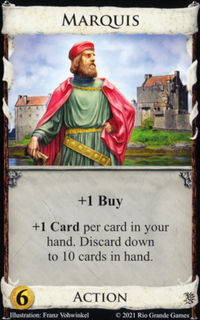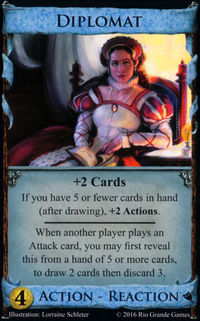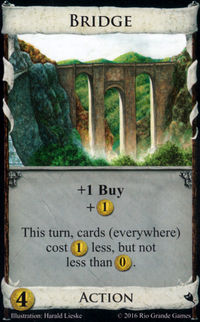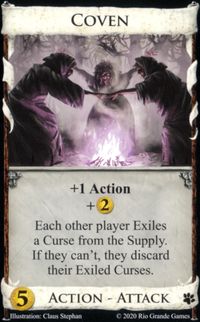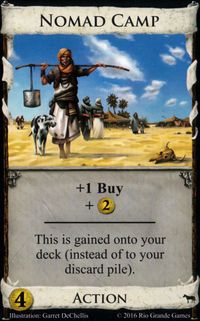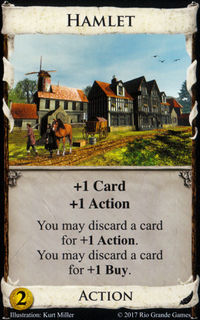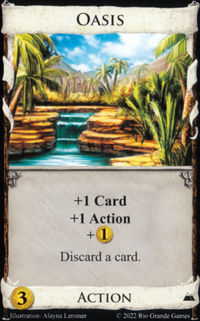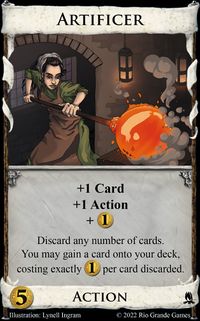Draw-to-x: Difference between revisions
mNo edit summary |
Updated to match general usage: Cards like scholar are considered draw-to-x cards by the community. Also added a comparison to Marquis/Diplomat. Wording isn't perfect, and I welcome suggestions, but it'll do for now. |
||
| Line 1: | Line 1: | ||
'''Draw-to-x''' abilities are those that allow you to [[draw]] cards until you have a specified number of cards in your hand, regardless of how many cards you have to start with. | '''Draw-to-x''' abilities are those that allow you to [[draw]] cards until you have a specified number of cards in your hand, regardless of how many cards you have to start with. In decks that rely on draw-to-x cards for draw, it is typically difficult or impossible to increase your handsize beyond a set limit, unlike in decks that rely on traditional draw. Draw-to-x effects come in two types: Those like {{Card|Library}}, which draw cards until a set card limit is reached, and those like {{Card|Minion}}, which require the player to discard their hand before drawing a set number of new cards. Draw-to-x effects of the first type include {{card|Library}} (7 cards), {{card|Watchtower}} (6), {{card|Cursed Village}} (6), {{card|Blacksmith}} (6), {{way|Way of the Owl}} (6), and {{card|Jack of All Trades}} (5). Draw-to-x effects of the second type include {{card|Scholar}} (7 cards), {{card|Hunting Lodge}} (5), {{card|Minion}} (4), and {{way|Way of the Mole}} (3). Other cards that resemble draw-to-x cards include {{Card|Marquis}} and {{Card|Diplomat}}, which like draw-to-x cards disincentivize having large handsizes. | ||
Draw-to-x effects include {{card|Library}} (7 cards), {{card|Watchtower}} (6), {{card|Cursed Village}} (6), {{card|Blacksmith}} (6), {{way|Way of the Owl}} (6), and {{card|Jack of All Trades}} (5). | |||
===Strategy=== | ===Strategy=== | ||
Revision as of 02:28, 7 July 2022
Draw-to-x abilities are those that allow you to draw cards until you have a specified number of cards in your hand, regardless of how many cards you have to start with. In decks that rely on draw-to-x cards for draw, it is typically difficult or impossible to increase your handsize beyond a set limit, unlike in decks that rely on traditional draw. Draw-to-x effects come in two types: Those like Library, which draw cards until a set card limit is reached, and those like Minion, which require the player to discard their hand before drawing a set number of new cards. Draw-to-x effects of the first type include Library (7 cards), Watchtower (6), Cursed Village (6), Blacksmith (6), Way of the Owl (6), and Jack of All Trades (5). Draw-to-x effects of the second type include Scholar (7 cards), Hunting Lodge (5), Minion (4), and Way of the Mole (3). Other cards that resemble draw-to-x cards include Marquis and Diplomat, which like draw-to-x cards disincentivize having large handsizes.
Strategy
Draw-to-x cards are useful counters against handsize attacks, since each card you discard when attacked just means one more card you'll draw when you play your draw-to-x card.
The draw-to-x engine is a deck archetype that relies on reducing handsize and producing in your Action phase, and then playing a draw-to-x card to recover the handsize. Draw-to-x decks require non-drawing Action cards as payload (e.g, Bridge, Coven, Nomad Camp), along with draw-to-x cards, and probably villages to grant you enough terminal space to play all your payload and draw cards. Disappearing money cards—non-terminal payload Actions that don't draw—are especially useful in a draw-to-x deck, since they reduce the amount of terminal space you need to activate your engine. Draw-to-x also pairs well with cards that allow you to discard for a benefit, such as Hamlet, Oasis, and Artificer: discard to get the full benefit, and then redraw to a full hand.
Draw-to-x engines are typically less reliable than ordinary draw engines, as they require both the payload and the draw-to-x card (and sometimes a village) to be in the starting hand. Moreover they do not cope well with non-Action stop cards, even strong Treasures and Night cards, since they can't be played before your draw-to-x card and will remain in your hand reducing the number of cards you can draw.
